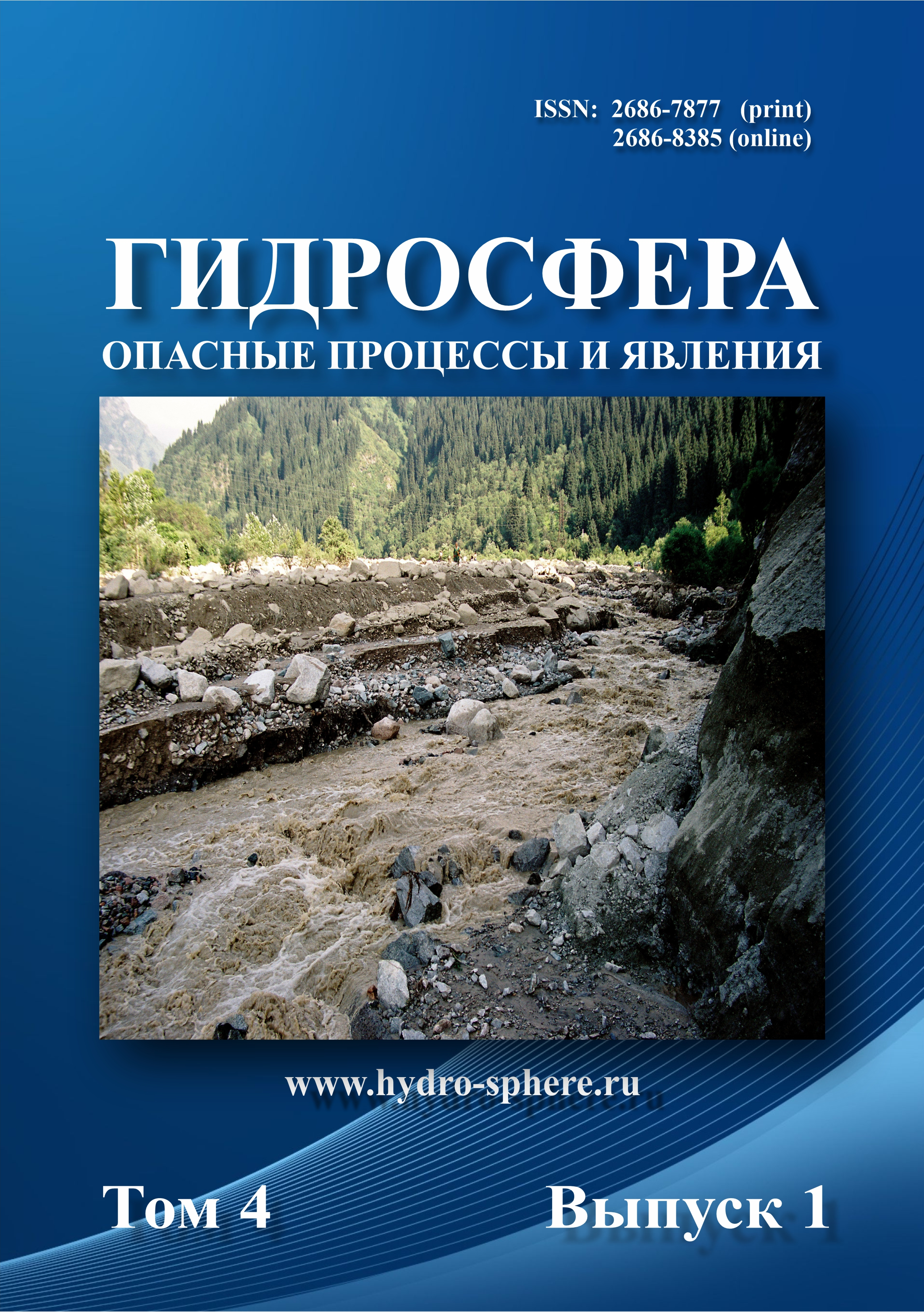Astaf'eva N.M. Wavelet analysis: basic theory and some applications. Physics-Uspekhi (Advances in Physical Sciences), 1996, vol. 39,
iss. 11, pp. 1085–1108. DOI: 10.1070/PU1996v039n11ABEH000177. (Russ. ed.: Astaf'eva N.M. Veivlet-analiz: osnovy teorii i primenenie. Uspekhi fizicheskikh nauk, 1996, vol. 166, iss. 11, pp. 1145–1170. DOI: 10.3367/UFNr.0166.199611a.1145).
Bogutskaya E.M., Kositskiy A.G., Aybulatov D.N., Grechushnikova M.G. Srednii mnogoletnii stok rek yugo-zapadnoi chasti Krymskogo poluostrova. [Average perennial flow of rivers of the southwestern part of the Crimean peninsula]. Vodnoe khozyaistvo Rossii: problemy, tekhnologii, upravlenie [Water sector of Russia: problems, technologies, management], 2020, iss. 2. pp. 37–51. (In Russian; abstract in English). DOI: 10.35567/1999-4508-2020-2-3.
Bolgov M.V., Zaitseva A.V. Otsenka mestnogo stoka Respubliki Krym [Assessment of local runoff of the Republic of Crimea]. Cbornik nauchnykh trudov, predstavlenykh na Vserossiiskoi nauchnoi konferentsii s mezhdunarodnym uchastiem «Vodnye resursy: novye vyzovy i puti resheniya», posvyashchennoi Godu ekologii v Rossii i 50-letiyu Instituta vodnykh problem RAN (Sochi,
–7 oktyabrya 2017 goda) [Collection of scientific papers presented at the All-Russian scientific conference with international participation "Water resources: new challenges and solutions", dedicated to the Year of Ecology in Russia and the 50th anniversary of the Institute of Water Problems of the Russian Academy of Sciences (Sochi, October 2–7, 2017)]. Novocherkassk, Publ. Lik, 2017, pp. 116–120. (In Russian).
Gafarova S.S., Khairova E.A. Analiz obespechennosti presnoi vody v Krymu [Analysis of freece water safety in Crimea]. Sbornik statei Tret'ei Mezhdunarodnoi nauchno-prakticheskoi konferentsii «Formirovanie konkurentnoi sredy, konkurentosposobnost' i strategicheskoe upravlenie predpriyatiyami, organizatsiyami i regionami» (Penza, 24–25 maya 2018 goda) [Сollection of articles of the Third International Scientific and Practical Conference "Formation of a competitive environment, competitiveness and strategic management of enterprises, organizations and regions" (Penza, May 24-25, 2018).]. Penza, Publ. PSAU, 2018, pp. 32–36. (In Russian; abstract in English).
Ivanutin N.M., Podovalova S.V., Kremenskoy V.I. Vodooborot i antropogennaya nagruzka v bassejne reki Salgir [Water rotation and anthropogenic pressures in the basin of the River Salgir] Nauchnyj zhurnal Rossijskogo NII problem melioracii [Scientific Journal of Russian Scientific Research Institute of Land Improvement Problems], 2016, iss. 4 (24), pp. 174–188. (In Russian; abstract in English).
Resursy poverkhnostnykh vod SSSR: v 20 t. Tom 6. Ukraina i Moldaviya: v 4 vyp. Vypusk 4. Krym [Surface water resources of the USSR: in 20 vol. Vol. 6. Ukraine and Moldova: in 4 iss. Issue 4. Crimea]. Leningrad, Publ. Gidrometeoizdat, 1966. 344 p. (In Russian).








1.png)




















